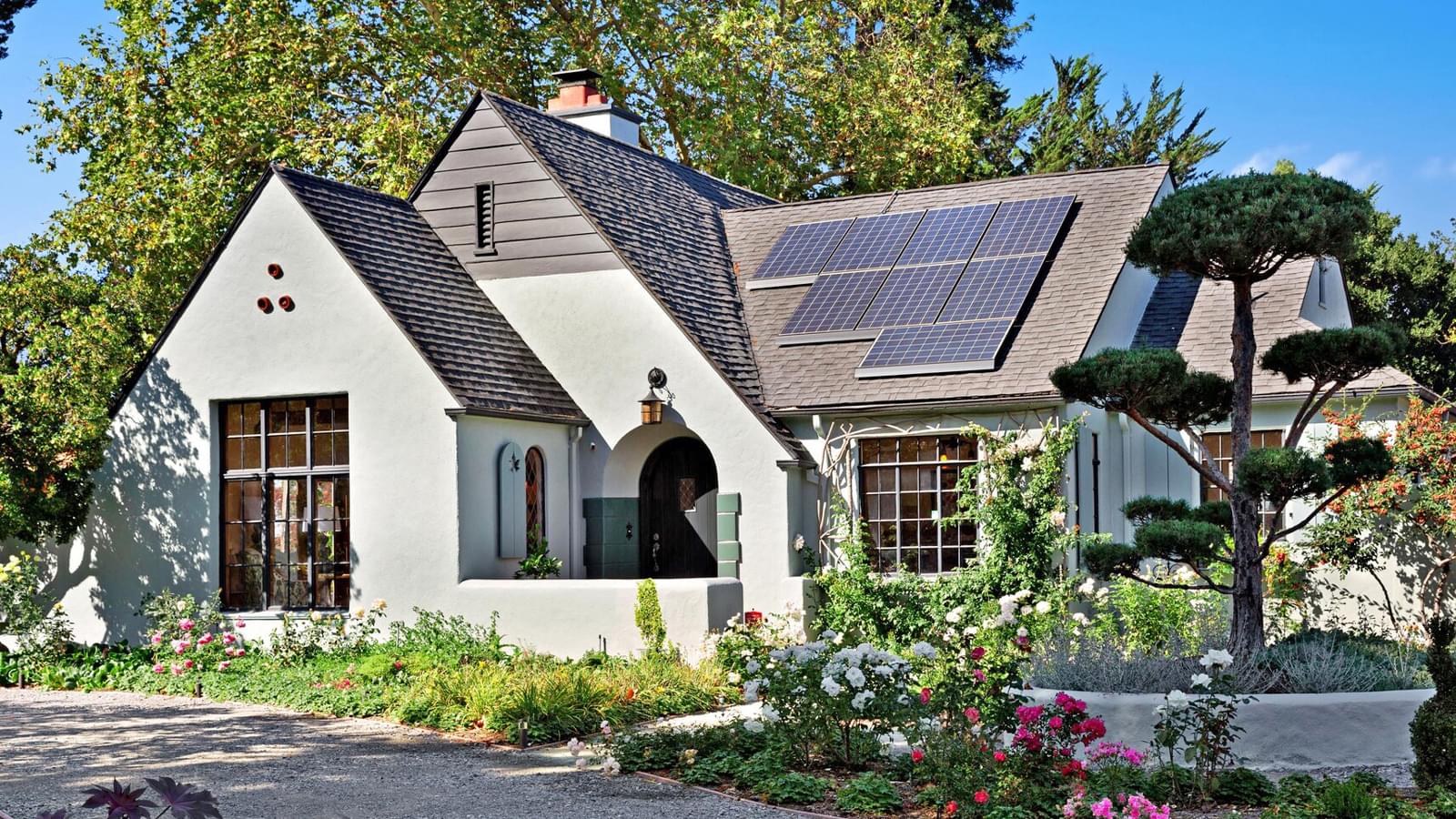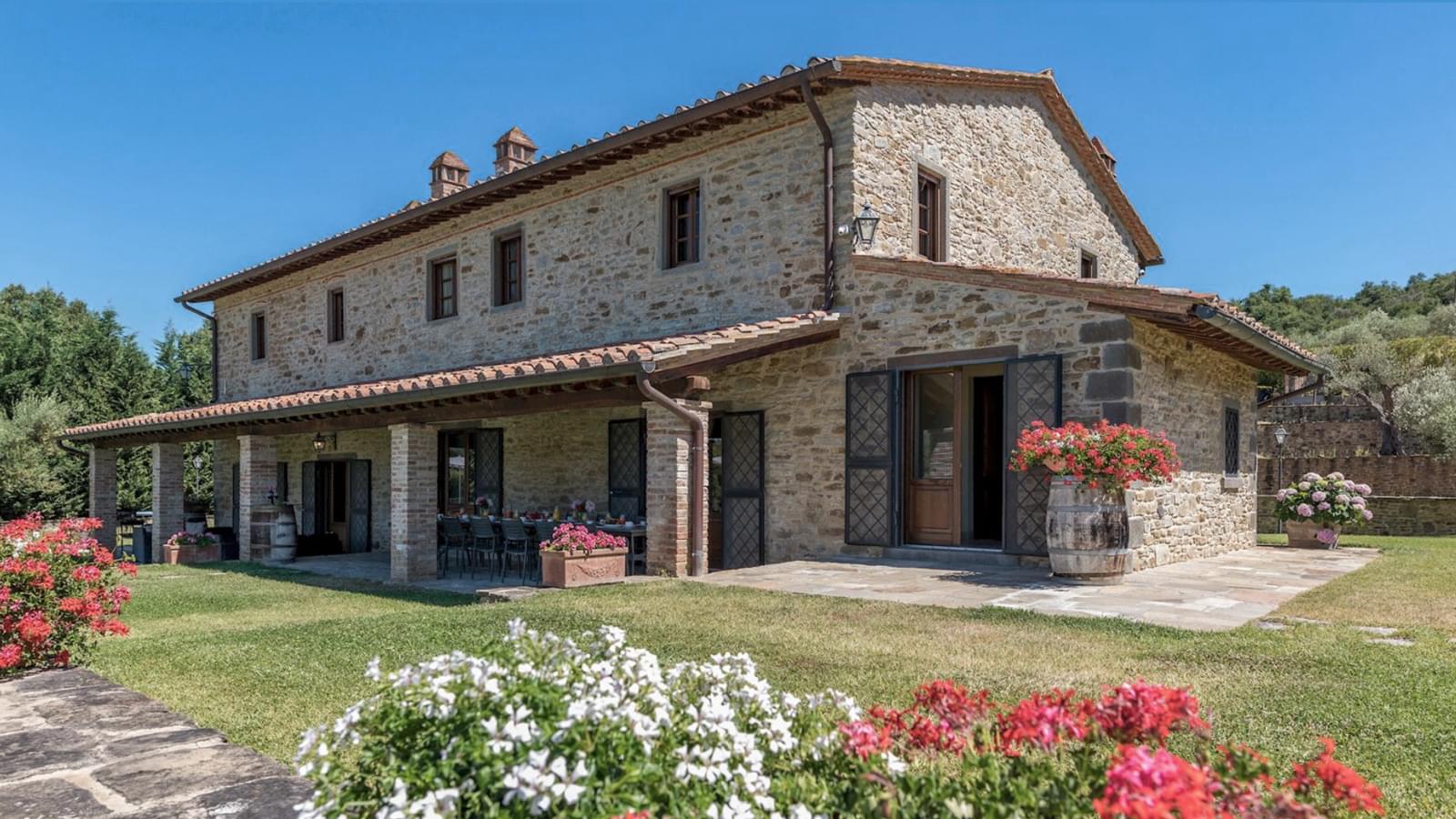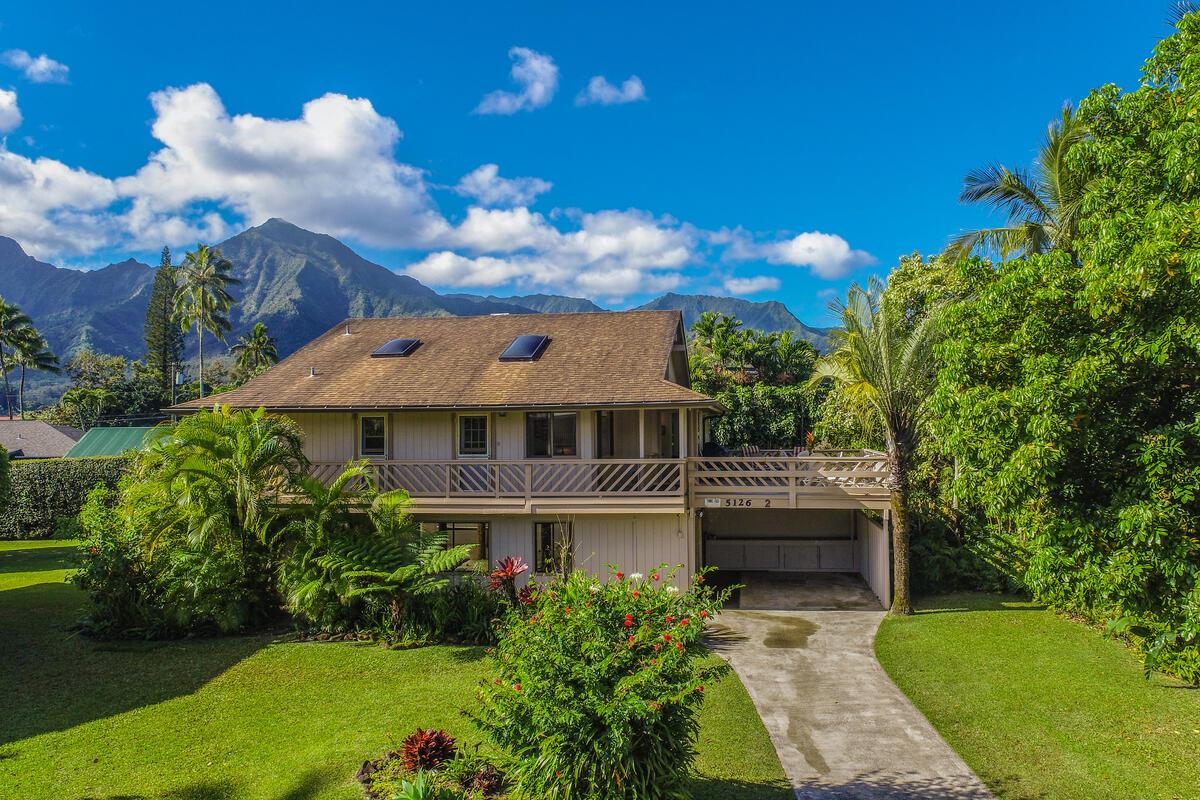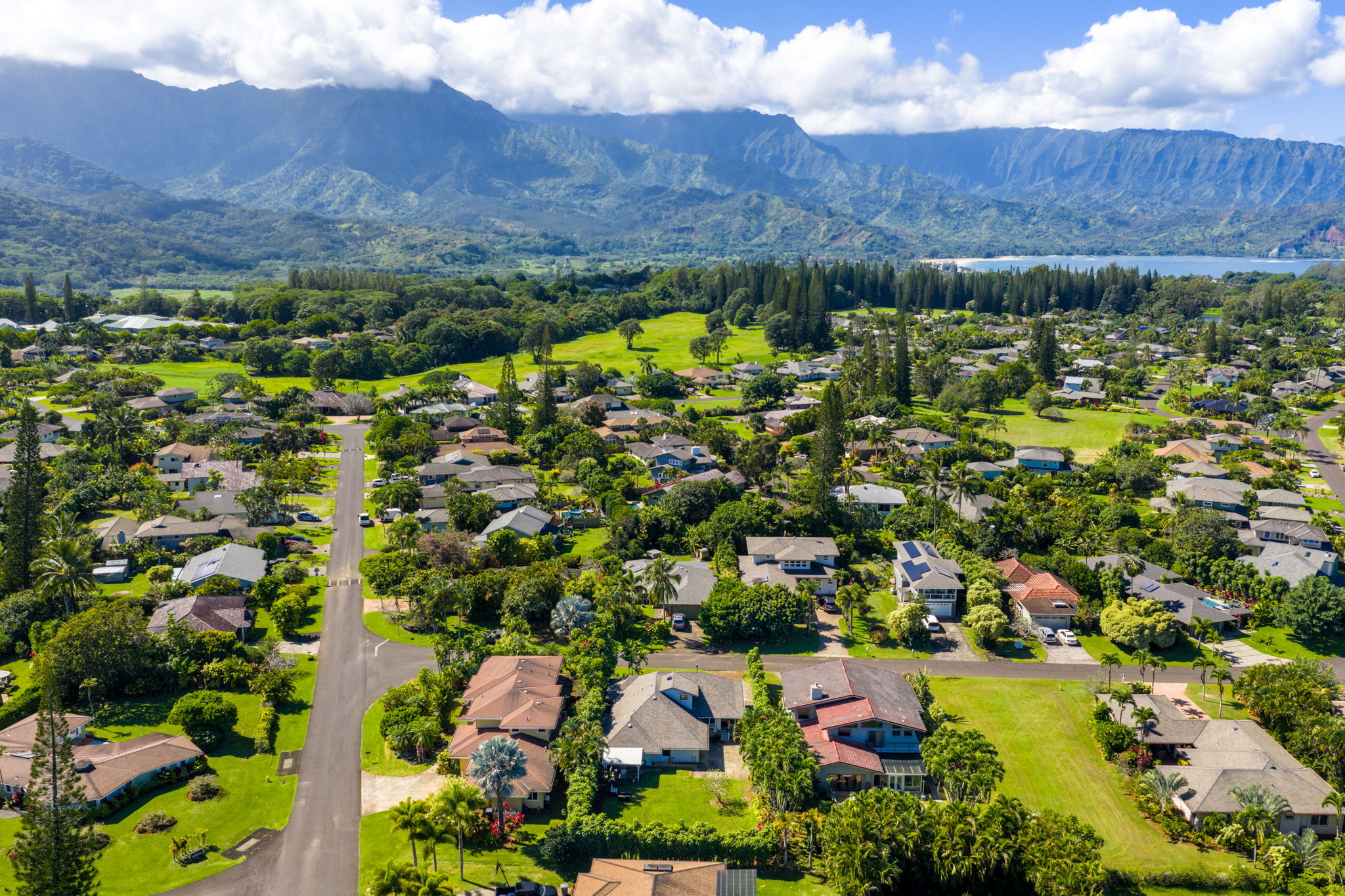Kilauea, Hawaii Vacation Rentals
Explore 643 rental homes and villas in Kilauea, Hawaii for your next vacation or business travel. With private vacation home rentals, enjoy a more personalized stay and a wide range of amenities such as Air Condition Homes, Best Affordable Homes and Great for Groups. With a wide range of homes to offer, pricing can start as low as $115 per night with homes containing as many as 10 bedrooms and 8 bathrooms. However you're looking to experience your stay, Homes and Villas by Marriott has your next vacation home waiting.
Types of vacation rentals in Kilauea
Where to stay in Kilauea
Booking a vacation rental in Kilauea, Hawaii?
Here are some things to know to support your visit:
Kilauea Overview
Immerse yourself in the awe-inspiring beauty of Kilauea, nestled on the southeastern coast of Hawaii's Big Island, where the primal forces of nature are on full display. This active volcano, the star of Hawaii Volcanoes National Park, a UNESCO World Heritage Site, offers a mesmerizing experience as you witness the Earth's geological processes unfold before your eyes.
The park's crown jewel is the Halema'uma'u crater, a sight to behold, especially at night when its glow casts an otherworldly light against the star-studded sky. The park's network of trails invites adventurers of all skill levels to traverse through diverse landscapes, from lush rainforests to stark lava fields, each telling a story of the island's dynamic evolution.
For an intimate and unparalleled experience, consider the luxury of renting a private home, where the comforts of personal space blend seamlessly with the natural surroundings. Many of these homes come with the added delight of swimming pools, offering a refreshing respite after a day of exploration. Pet-friendly options ensure that your furry companions can join in on the adventure, making for a perfect family retreat.
The island's coastline beckons with its stunning beaches and waterfronts, where the rhythm of the waves provides a soothing soundtrack to your stay. The proximity to the ocean allows for spontaneous dips in the sea or leisurely strolls along the shore at sunset.
Cultural insights abound as Kilauea is steeped in Hawaiian mythology, revered as the home of Pele, the goddess of fire. The Jaggar Museum and the Hawaiian Volcano Observatory enrich your visit with exhibits on the volcano's geology, history, and cultural significance.
The Thurston Lava Tube offers a journey through the heart of a once-flowing river of lava, while the Crater Rim Drive and Chain of Craters Road present breathtaking vistas and the chance to spot glowing lava flows.
Kilauea is not just a destination; it's an experience that connects you to the raw and majestic power of the Earth. With the comfort of a private home, the joy of beachside living, and the thrill of volcanic wonders, your journey to Kilauea will be etched in your memory as a truly transformative escape.
Cultural Attractions in Kilauea
Kilauea, located on the Big Island of Hawaii, offers a unique blend of natural wonder and cultural richness that can captivate travelers interested in the arts, history, and local customs. While Kilauea is primarily known for its volcanic activity and stunning landscapes, it also provides a gateway to the rich Hawaiian culture and history.
Begin your exploration at Hawaii Volcanoes National Park, where the earth's raw power is on full display. Here, you can learn about the geological history that has shaped the Hawaiian Islands at the Kilauea Visitor Center. The park also offers cultural demonstrations and talks that delve into the traditions and stories of the native Hawaiian people, providing a deeper understanding of the island's heritage.
For those interested in the arts, the Volcano Art Center, located within the national park, is a hub for local artists. The center showcases a variety of works, from traditional Hawaiian crafts to contemporary art, all inspired by the island's vibrant landscapes and culture. The gallery hosts exhibitions, workshops, and performances, allowing visitors to engage with the creative spirit of the Big Island.
Live music is an integral part of Hawaiian culture, and at Kilauea, you can experience the soothing sounds of ukulele and slack-key guitar. Local restaurants and venues often feature live performances, giving you a taste of the island's musical traditions. The annual Merrie Monarch Festival, though held in nearby Hilo, is a world-renowned event celebrating Hawaiian culture with hula competitions, music, and art—a must-see if your visit coincides with this vibrant celebration.
History enthusiasts will appreciate the Pu'uhonua o Hōnaunau National Historical Park, a short drive from Kilauea. This sacred place was once a refuge for ancient Hawaiians who broke kapu (sacred laws). The park offers a glimpse into the traditional Hawaiian way of life, with beautifully restored temples and wooden carvings of Hawaiian gods.
For a more immersive experience, consider participating in a cultural workshop or a guided tour that focuses on the island's history and traditions. Learn about the significance of the hula, the art of lei-making, or the importance of the 'āina (land) in Hawaiian culture.
While Kilauea may not have the extensive array of museums and galleries found in larger cities, its cultural offerings are deeply intertwined with the natural environment and the living traditions of the Hawaiian people. It's a place where the past and present merge, offering a truly unique cultural journey set against the backdrop of one of the world's most active volcanoes.
Family friendly activities in Kilauea
Kilauea, located on the Big Island of Hawaii, is a paradise for families and a wonderland for children with a sense of adventure and a curiosity about the natural world. As one of the most active volcanoes on Earth, Kilauea offers a unique opportunity to witness the power of nature in a safe and educational environment.
Begin your family adventure at Hawai'i Volcanoes National Park, where kids can become Junior Rangers and engage in activities designed to teach them about volcanology, conservation, and the cultural significance of the area. The park's visitor center provides interactive displays and valuable information to help families make the most of their visit.
Take a hike along the many trails that wind through the park, such as the Earthquake Trail or the Devastation Trail, which are both accessible and offer a glimpse into the transformative power of volcanic activity. These trails are not only educational but also provide a chance for children to burn off some energy in the great outdoors.
For a truly unforgettable experience, visit the Thomas A. Jaggar Museum, where families can learn about the work of volcanologists and view the Halema'uma'u Crater from a safe distance. Although the museum itself was closed due to recent volcanic activity, the overlook remains an excellent spot for viewing the glowing lava lake at dusk, a sight that is sure to captivate children and adults alike.
If your family is up for a drive, the Chain of Craters Road is a scenic route that descends 3,700 feet over 20 miles, leading to where past lava flows have crossed the road and created a rugged, otherworldly landscape. Along the way, stop at the various lookout points and consider a short walk to see the ancient petroglyphs carved into the lava rock at the Pu'u Loa Petroglyphs.
For a break from volcanic exploration, the Pana'ewa Rainforest Zoo and Gardens, located in nearby Hilo, is a small zoo set in a lush rainforest setting. It's a great place for kids to see a variety of animals, including the endangered nene goose, the state bird of Hawaii.
Kilauea is not just a destination; it's an adventure that combines education, excitement, and the beauty of nature. It's a place where children can learn about the Earth's geology, respect the power of nature, and create memories that will last a lifetime.
Outdoor activities in Kilauea
Kilauea, located on the Big Island of Hawaii, is a paradise for outdoor enthusiasts and nature lovers. As one of the most active volcanoes on Earth, it offers a unique and dynamic landscape that is both awe-inspiring and humbling.
The Hawaii Volcanoes National Park is the centerpiece of Kilauea's natural attractions. Here, visitors can witness the raw power of the Earth's geology in action. The park offers numerous hiking trails that range from easy walks to challenging treks across volcanic craters and desolate lava fields. The Crater Rim Drive and Chain of Craters Road provide stunning views of the caldera and the ever-changing volcanic landscape.
For a truly unforgettable experience, the park's rangers lead guided hikes and provide educational talks about the area's geology, flora, and fauna. At the Thomas A. Jaggar Museum, you can learn about the science of volcanoes and the history of Kilauea's eruptions. Although the museum was closed due to damage from recent seismic activity, the park continues to offer alternative educational opportunities.
The Thurston Lava Tube (Nāhuku) is another must-see feature within the park. This natural tunnel was formed by flowing lava and now allows visitors to walk through a former conduit of molten rock. The surrounding rainforest also provides a stark contrast to the volcanic landscapes, showcasing the island's biodiversity.
For those who prefer a bird's-eye view, helicopter tours are available to soar over the volcanic terrain, providing a unique perspective on the flowing lava and the expansive devastation it can create. These tours also highlight the regenerative power of nature, as new life slowly takes hold on the fresh lava flows.
Beyond the national park, Kilauea's surroundings offer a wealth of outdoor activities. The nearby Lava Tree State Monument showcases a forest of lava molds of tree trunks, a testament to past lava flows. The Puna district, with its rugged coastline and thermal pools, invites exploration and relaxation in equal measure.
Snorkeling and diving in the waters off the Big Island can reveal a vibrant underwater world, including coral reefs and a variety of marine life. The warm waters are also ideal for swimming and paddleboarding, especially in the protected bays.
Kilauea is not just a destination; it's an experience that connects visitors with the primal forces of nature. Whether you're hiking across a volcanic crater, watching the glow of lava at night, or exploring the lush rainforests, Kilauea offers an outdoor adventure that is both exhilarating and enlightening.
Weather in Kilauea
Kilauea, located on the island of Hawaii, is a destination where the weather plays a significant role in the travel experience, especially given its status as one of the most active volcanoes in the world. The climate in Kilauea is tropical, with warm temperatures year-round and varying levels of precipitation depending on the time of year.
The temperature in Kilauea is relatively stable throughout the year, with daytime highs averaging around 70°F to 85°F (21°C to 29°C). Nights are cooler but still comfortable, with temperatures typically in the 60s°F (15°C to 20°C). The area's elevation can influence the temperature, so it's cooler at higher elevations near the volcano.
Humidity in Kilauea is generally high due to its tropical location, which can make the air feel warmer than the actual temperature. However, the trade winds that frequently blow through the area help to moderate the humidity and provide a refreshing breeze.
Precipitation varies throughout the year, with the wettest months being from November to March. This period can see frequent rain showers, which are usually short-lived but can be heavy. The rain is what keeps the landscape lush and green, contributing to the area's natural beauty. The drier season extends from April to October, with less frequent rainfall, making it a popular time for visitors who prefer outdoor activities and exploring the volcano without as much rain.
The most popular weather conditions in Kilauea are found during the drier months, particularly from May to October, when there is less rain and the skies are often clearer. This period is ideal for hiking, sightseeing, and enjoying the natural wonders of the area, including the Hawaii Volcanoes National Park.
For those seeking the most pleasant climate, the months of April, May, September, and October are often recommended. During these shoulder months, visitors can enjoy warm temperatures, lower humidity, and fewer rain showers, along with the added benefit of smaller crowds compared to the peak summer season.
Regardless of when you visit, Kilauea's weather is part of the adventure. The area's microclimates mean that you can experience sunshine, rain, and mist all in the same day, so it's wise to be prepared with layers and rain gear to fully enjoy the diverse environments that Kilauea has to offer.
Transportation in Kilauea
Kilauea, located on the Big Island of Hawaii, is a destination that offers a unique blend of natural beauty and geological wonder. Most travelers arrive on the Big Island through either the Kona International Airport on the west side or the Hilo International Airport on the east side. From there, renting a car is the most convenient way to reach Kilauea and explore the surrounding areas, as public transportation options are limited.
The drive to Kilauea from either airport is scenic and allows visitors to experience the diverse landscapes of the Big Island. Once in the vicinity of Kilauea, the main attraction is the Hawaii Volcanoes National Park, which is home to the active Kilauea Volcano. The park has a well-developed infrastructure, including a visitor center and marked trails that lead to various points of interest, such as the Halema'uma'u Crater and the Thurston Lava Tube.
Within the park, driving is the primary mode of transportation, with several key overlooks and trailheads accessible by car. However, the park is also a hiker's paradise, with numerous trails that range from easy walks to challenging treks. Exploring on foot is highly recommended to fully experience the volcanic landscapes and ecosystems.
For those who prefer not to drive, guided tours are available that provide transportation to and from the park, as well as in-depth information about the area's geology and history. These tours often include stops at other attractions on the Big Island, such as coffee farms and black sand beaches.
While Kilauea itself is not a walkable destination due to the vast distances and rugged terrain, the Hawaii Volcanoes National Park is designed to be accessible to visitors with various interests and abilities. There are plenty of walking paths and overlooks near the parking areas for those who prefer shorter strolls, as well as longer trails for more adventurous hikers.
In summary, while public transportation is limited, Kilauea and the Hawaii Volcanoes National Park are best experienced with the flexibility of a rental car or through an organized tour. The park offers a mix of driving and walking opportunities, allowing visitors to tailor their experience to their preferences and physical abilities. Whether you're witnessing the glow of lava at night or hiking through a rainforest, Kilauea is a destination that promises awe-inspiring experiences.





